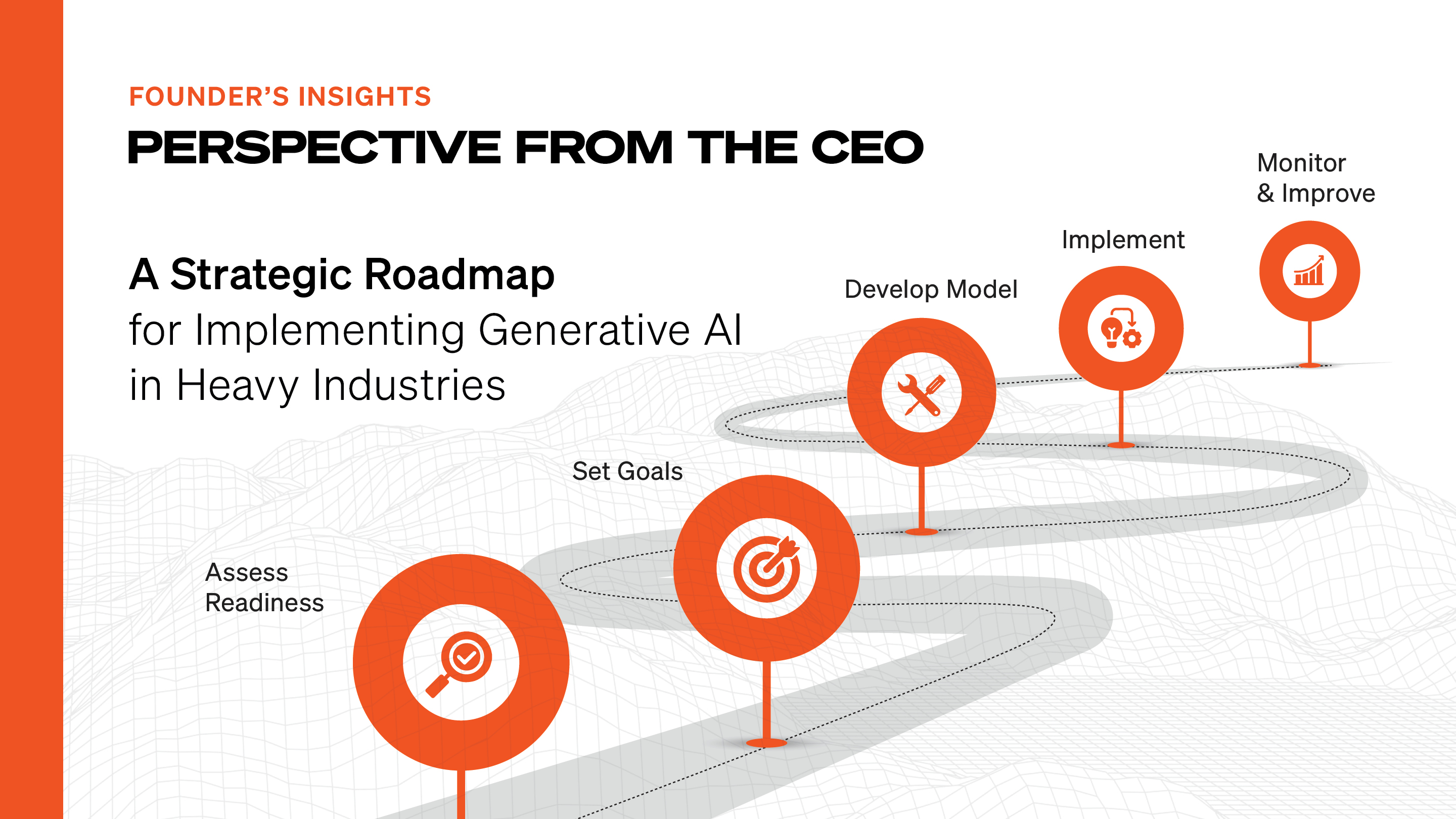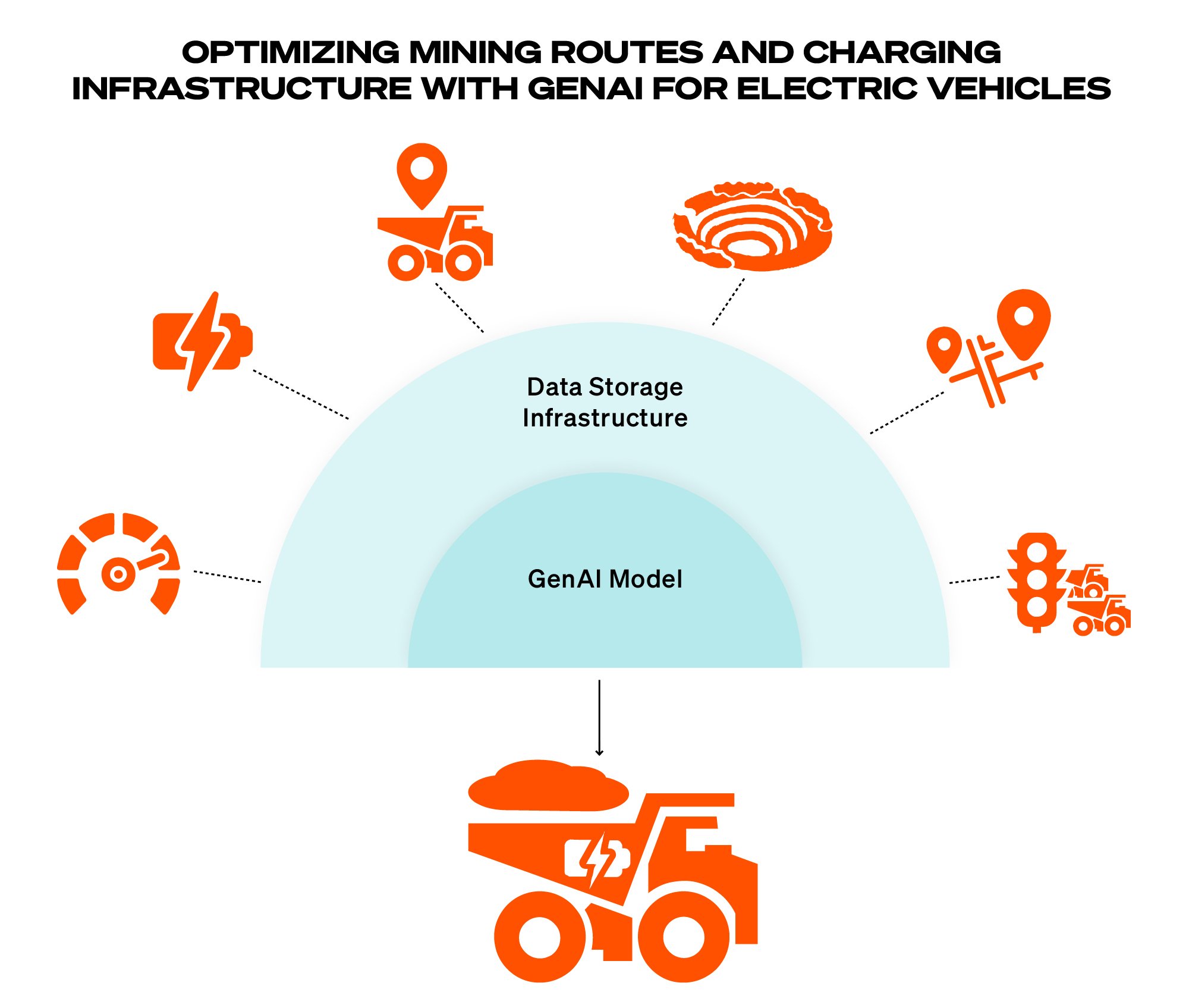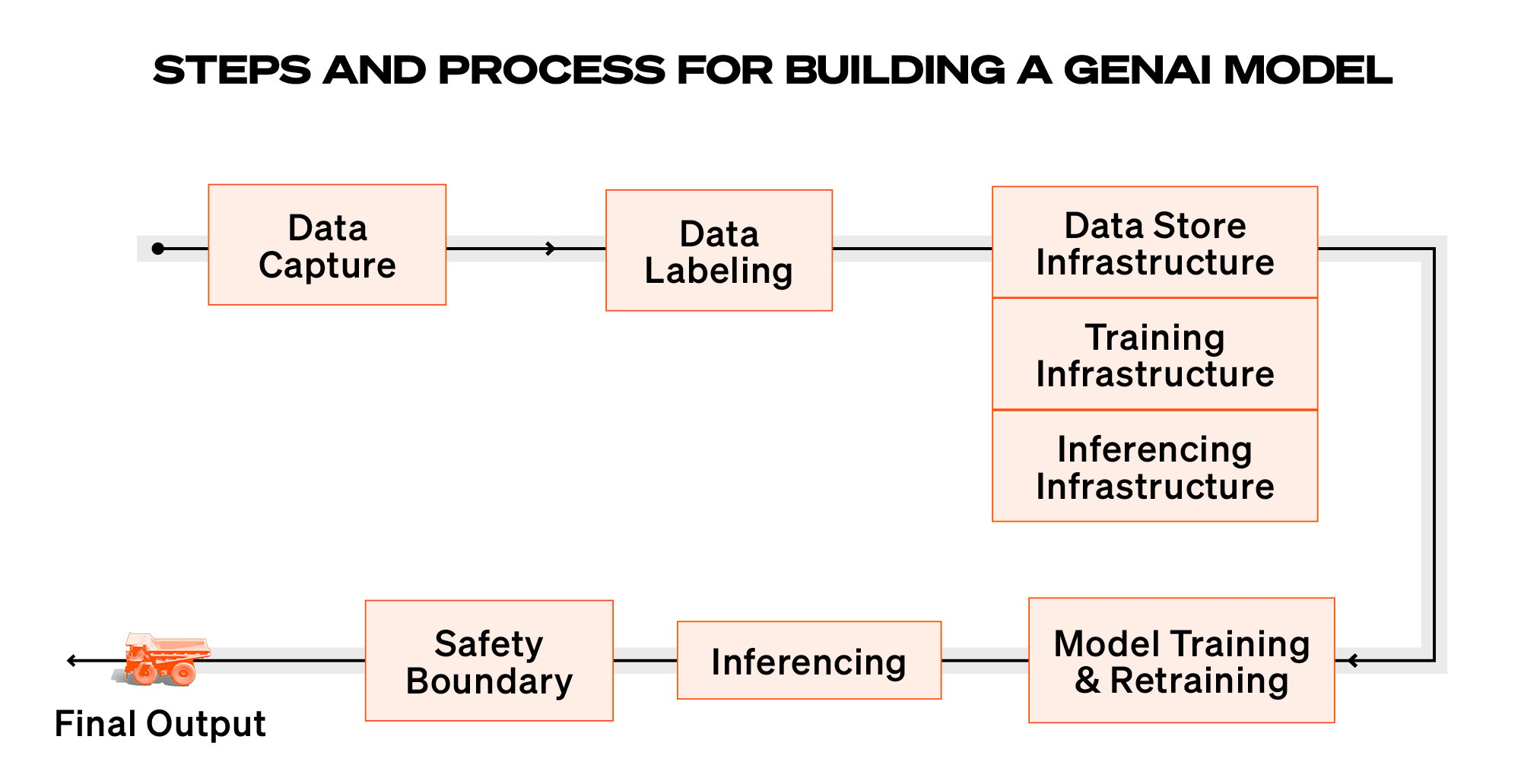
Founder’s Insights | A Strategic Roadmap for Implementing Generative AI in Heavy Industries

Implementing generative AI is overwhelming for most companies. Mainstream applications of generative AI are still fairly nascent. There’s no clear roadmap for companies. There are limitless potential use cases. And on top of it all, there’s pressure to move quickly to stay competitive.
With this article, I wanted to clear up some of the mystery and confusion currently clouding generative AI adoption and provide a step-by-step guide for how companies can think about deploying this revolutionary technology.
Make a Plan
A strategic roadmap is essential to effective deployment. Outlining the steps necessary to achieve a particular goal. In the context of AI, a strategic roadmap helps companies navigate the complexities of AI adoption. It provides a clear path from the current state to the desired future state, ensuring that all efforts are aligned and focused on achieving the company’s AI objectives.
A good roadmap will do three things:
- Assess AI readiness: This involves evaluating the company's existing data infrastructure, technology, and AI readiness. Key questions to consider include:
- What data is currently being collected?
- How is this data stored and managed?
- What technology infrastructure is in place to support AI?
- What is the company's level of AI knowledge and expertise?
- Identify use cases and where AI can deliver impact: Evaluate existing workflows, determine where the pain points are, and assess where AI can have the greatest impact.
- Set specific, measurable metrics: For example, a mining company’s goal could be to improve mineral estimates by 20%. These goals ensure the deployment is driving tangible business impact.
The integration of AI can be seen as either a defensive or offensive strategy. A defensive strategy might involve using AI to maintain your market position, for example, by improving efficiency or reducing costs. An offensive strategy, on the other hand, might involve using AI to gain a competitive advantage, for example, by developing new products or services. For heavy industry, taking the first step will be an offensive strategy.
By examining real-world examples, we can gain a comprehensive understanding of the steps needed for developing GenAI Models in-house. We’ll use this use case from the mining industry as an example to outline the necessary steps:

Develop the Generative AI Model
With clear goals, objectives, and evaluation metrics, the next step is to develop the generative AI model. This is a multi-step process that involves collecting and cleaning the necessary data, selecting the appropriate AI model, and training and validating the model:
- Data Capture: Collect the data that will be used to build and train the model. This includes operational data, sensor data, historical data, and more. Let’s elaborate on this using a mining use case:
“Optimizing Mining Routes and Charging Infrastructure with Generative AI for Electric Vehicles”
Data Capture involves collecting the data that will be used to build and train the model. This data will be collected from various sources, such as vehicle telematics systems, GIS systems, and traffic monitoring systems, and in this use case includes:- Operational data from the electric vehicles, such as their current location, speed, and battery level
- Data about the layout of the mine and the location of the resources
- Data about the location and capacity of the charging stations
- Data about the current traffic conditions in the mine
- Data Labeling: Label the data before training. This is critical for supervised learning models and for the human-in-the-loop reinforcement learning, where human feedback is used to improve the model continuously. In the context of our use case, this involves labeling the data with information about the optimal routes and charging station usage.
- Data Storage Infrastructure: The collected and labeled data needs to be stored in a robust data storage infrastructure. This infrastructure needs to ensure data privacy and be cost-effective. There are several options to consider:
- On-Premises Servers: This involves storing the data on servers located within companies’ own facilities. This option gives full control over the data and can provide strong security, as companies can implement their own security measures and have physical control over the servers. However, it can be costly to set up and maintain, and it may not scale well if your data storage needs grow rapidly.
- Cloud-Based Solutions: This entails storing the data on servers located in the cloud, which are maintained by a third-party provider. This option can be more cost-effective, as you only pay for the storage space you use and don't have to worry about maintenance. It also scales well, as you can easily increase your storage space as needed. However, you have less control over your data, and there may be concerns about data privacy and security, depending on the provider’s policies and practices.
- Hybrid Approach: This involves using a combination of on-premises servers and cloud-based solutions. This can provide a balance between control and cost-effectiveness, allowing you to store sensitive data on-premises and less sensitive data in the cloud. However, it can be more complex to manage, as you need to coordinate between the two types of storage.
For the mining industry, I would suggest going with Cloud-based solution to get the process started without incurring early cost for On-Premises Servers. This could be as simple as picking Amazon S3 buckets.
- Building the Model: Select the right pre-built model as a starting point, and then train this model with your proprietary data to tailor it to your specific needs. For our use case, an open-source LLM model with text input and text output will work well. I’ve found the best solution currently is Llama 2 from Meta. Llama 2 will work well for the Optimizing Mining Routes use case
- Training and Retraining the Model: After the selection of the appropriate model, the next step is to train it using the labeled data. This requires inputting the data into the model, which then uses it to learn and make predictions. The model's parameters are adjusted during this process to minimize the discrepancy between its predictions and the actual results. The training process is iterative and continuous. The process doesn't stop at the initial training. As new data becomes available, the model needs to be retrained or fine-tuned. This ensures that the model continues learning and improving its performance. For our Optimizing Mining Routes use case, incumbents have advantage of having past data and continuous data from the site to retrain and improve the model.
- Training Infrastructure: To begin, choose the same strategy for your training infrastructure as your data storage infrastructure. As you start getting more understanding of the need, you can update and modify this strategy based on your need.
- Inferencing: This step is the result of all the hard work. Once the model has been trained, it's time to use it to make predictions or decisions. This process is known as inferencing. For our use case, the model is used to optimize mining routes and charging infrastructure for electric vehicles. The model processes this data and outputs optimized routes for the mining vehicles. These routes are designed to maximize efficiency, taking into account factors such as the shortest distance, the least energy consumption, the availability of charging stations, and the current operational status of the vehicles and charging infrastructure. The model can also predict when and where new charging stations should be installed based on the predicted routes and the expected energy consumption of the vehicles. This can help to ensure that the charging infrastructure is always adequate to meet the needs of the electric vehicles. The quality of these predictions and decisions depends on the accuracy of the model, which in turn depends on the quality of the training data and the effectiveness of the training process. Therefore, it's crucial to continually monitor and evaluate the model's performance and retrain the model as necessary to ensure its predictions remain accurate and useful. By accurately predicting the optimal mining routes and charging infrastructure, the model can help mining companies to increase the efficiency of their operations, reduce energy consumption, and maximize the utilization of their electric vehicles. This will lead to significant cost savings and environmental benefits.
- Inferencing Infrastructure: Use the same strategy as the training infrastructure strategy.
- Safety, Reliability, and Domain Validity Constraints and Guardrails: Ensure your model operates within safe and reliable parameters. Establish constraints and guardrails to ensure that the model’s outputs are valid and applicable to your specific domain. This is both crucial and relatively easy for the Mining Routes use case. This is a vast topic on its own and I will discuss it in depth in a future post.
You can reference some of our previous work in the area of AI safety to understand our philosophical approach in AI safety:
Here's a quick recap of the GenAI model steps and process:

Monitor and Improve the Generative AI Model
After implementation, companies need to continuously monitor the AI model’s performance and make improvements as necessary. This involves tracking the evaluation metrics defined earlier, gathering feedback from users, and refining the model based on these inputs.
Another way to continuously improve AI performance is to encourage bottom-up learnings. While a top-down approach is necessary for strategic direction, inviting creativity and experimentation from across the organization can lead to valuable insights and innovations. Encourage your team to experiment with AI, learn from their experiences, and share their findings.
Through strategic deployment, rigorous evaluation, constant refinement, and regular experimentation, companies across heavy industry can leverage the power of AI to drive significant improvements in their operations.
Give me a follow me on LinkedIn and Twitter to stay informed about the latest advancements in AI and learn how heavy industry can leverage its transformative potential.
